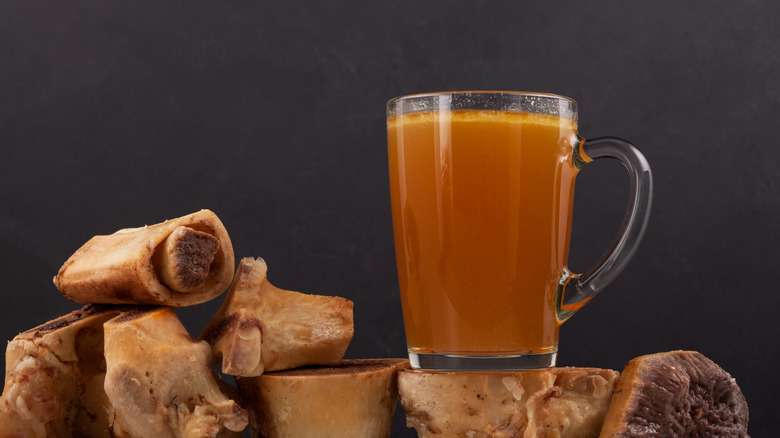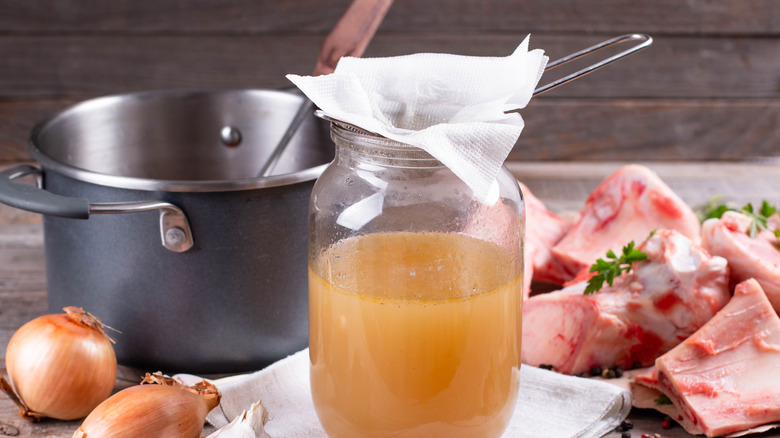Why You Shouldn't Add Extra Ingredients When Cooking Bone Broth
Made by boiling bones rich in marrow and cartilage in water for hours (or days), bone broth is a rich, flavorful ingredient, whether drunk on its own or used as a base for soups and stews.
As The New York Times explains, bone broth dates back to prehistoric times. In the United States, it surged in popularity with the introduction of the paleo diet — but it's been part of cuisines across the world for millennia, from Japanese tonkotsu to Caribbean cow foot soup. Bone broths are a French staple, and chef Marco Canora cites the broth his Tuscan mother made as inspiration for his popular New York shop Brodo, where customers can buy cups of broth served like coffee.
In many cultures, bone broth is purported to have medicinal qualities, an assertion tentatively backed by modern medicine. One study, published in the journal Medicina, suggests that bone broth's nutritional and anti-inflammatory properties reduce the symptoms of certain gastrointestinal diseases. The BBC explains that bone broth may support immune function and skin health, too. However, it's difficult to say exactly how beneficial bone broth is, since the nutritional content varies significantly based on the cooking time, temperature, and ingredients.
Whether you want to hone in on your heritage, put kitchen scraps to good use, or simply try something new, making bone broth on your own can be a fun and rewarding experience. However, it's always a good idea to learn a tip or two from the pros before you start.
Don't overcomplicate it
While making broth is time-consuming, the basic formula is pretty simple. Masterclass explains that you'll need an acid like vinegar or lemon juice to help release collagen, but other than that, all you really need are bones, water, salt, and plenty of time. While some recipes call for additional vegetables, Bon Appétit reports that their senior food editor, Andy Baraghani, is staunchly against adding too many extra ingredients.
According to Baraghani, a few aromatics like garlic or onions are ok, but too many vegetables can overcomplicate the broth. He's particularly opposed to carrots, which can impart an undesirable sweetness. Instead, Baraghani recommends blanching the bones, then roasting them in the oven at 450 degrees F until they're browned and caramelized. This process adds depth to the flavor and prevents the funky, unpleasant taste that some people associate with bone broth. However, not everyone agrees with his minimalist approach. Author Kanchan Koya recommends adding vegetables to her broth recipe, and even Bon Appetit publishes broth recipes that call for carrots and onions. While you shouldn't treat bone broth like vegetable stock and toss in any old kitchen scrap, additional vegetables can add flavor or help balance the savory taste with a little sweetness. If you do decide to toss a few carrots into the pot, Food.com recommends holding off till your broth has simmered for a while, though. Adding them too early will make them break down and give your broth a bitter flavor.
So if you do decide to make some bone broth, keep it simple!

